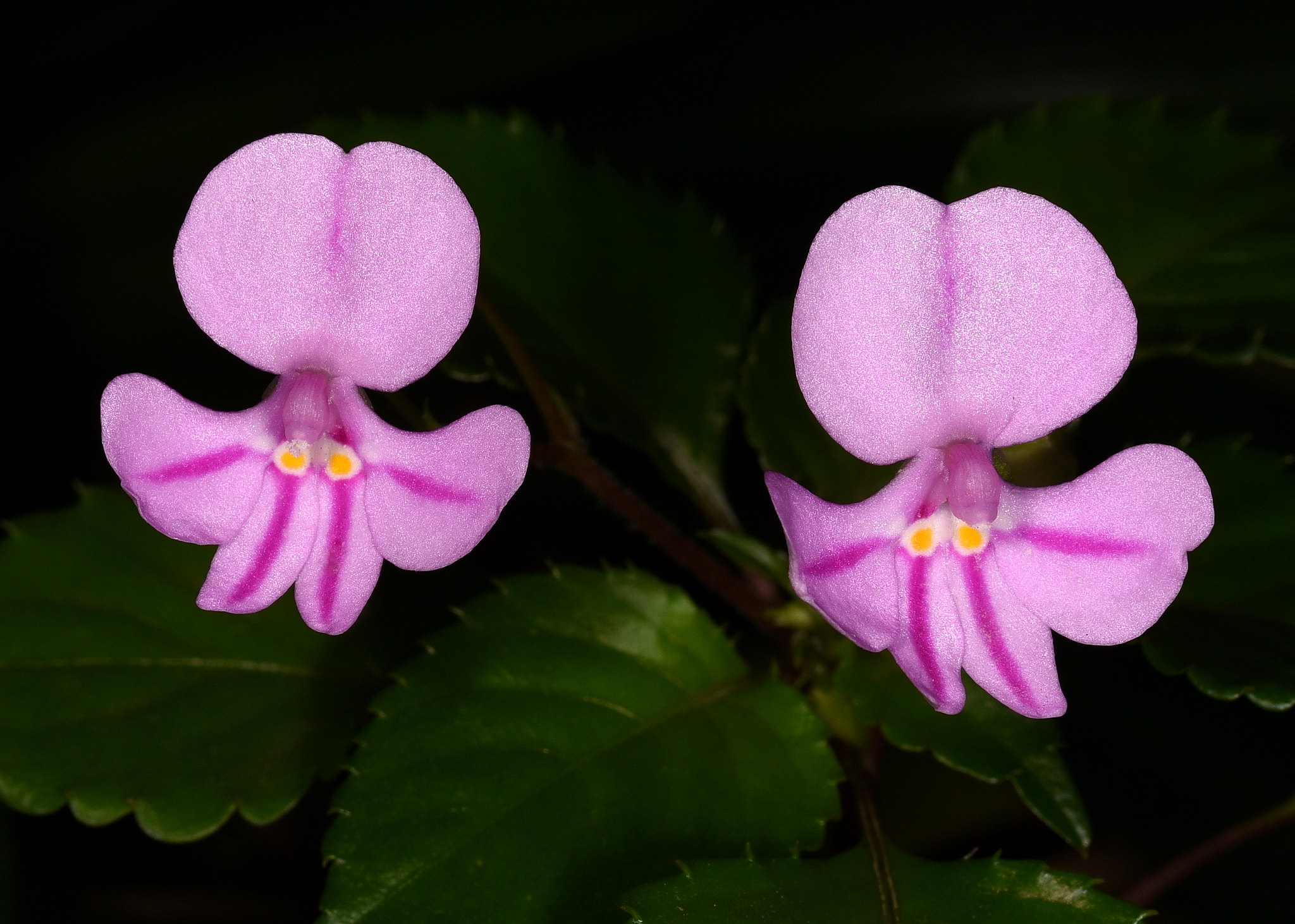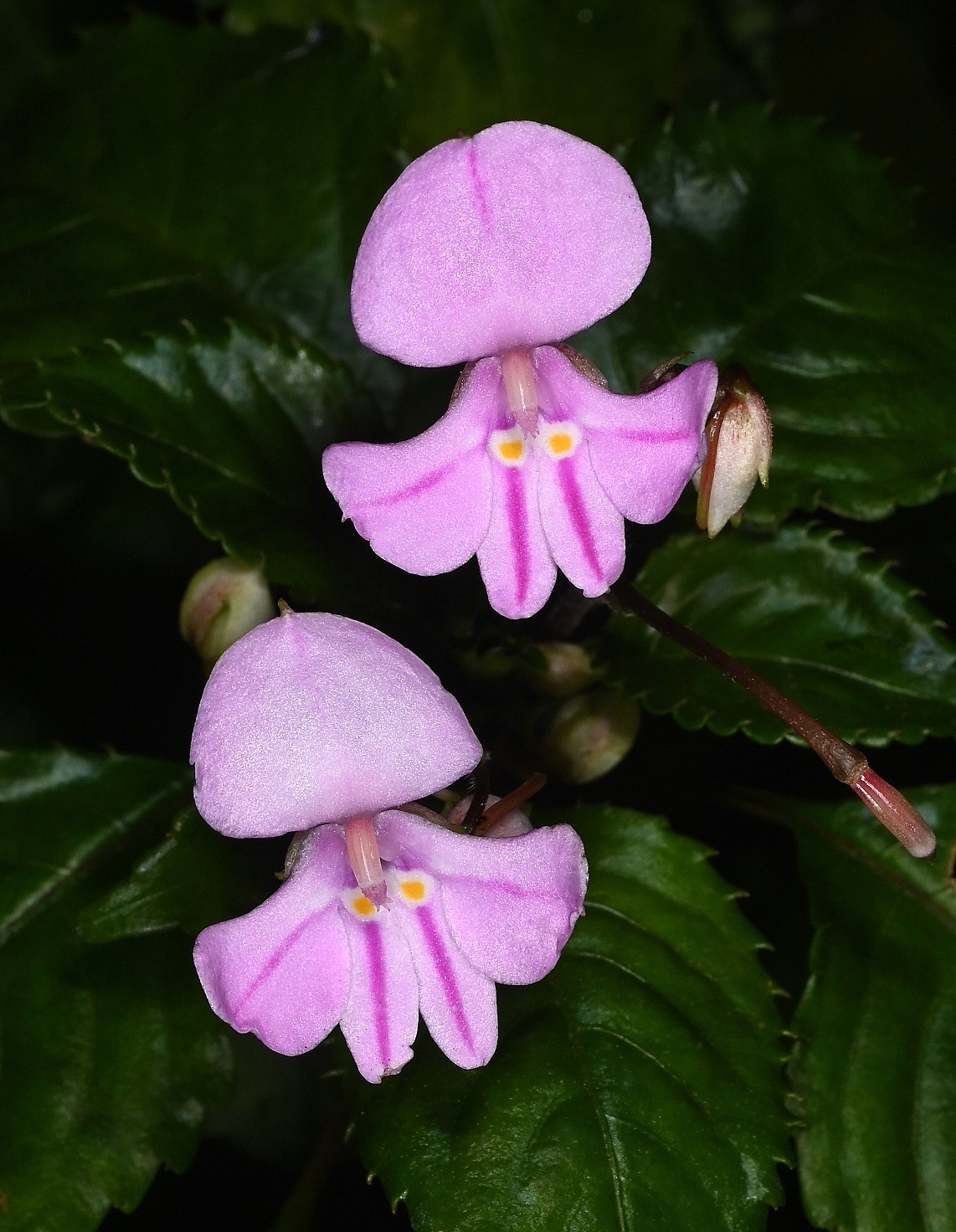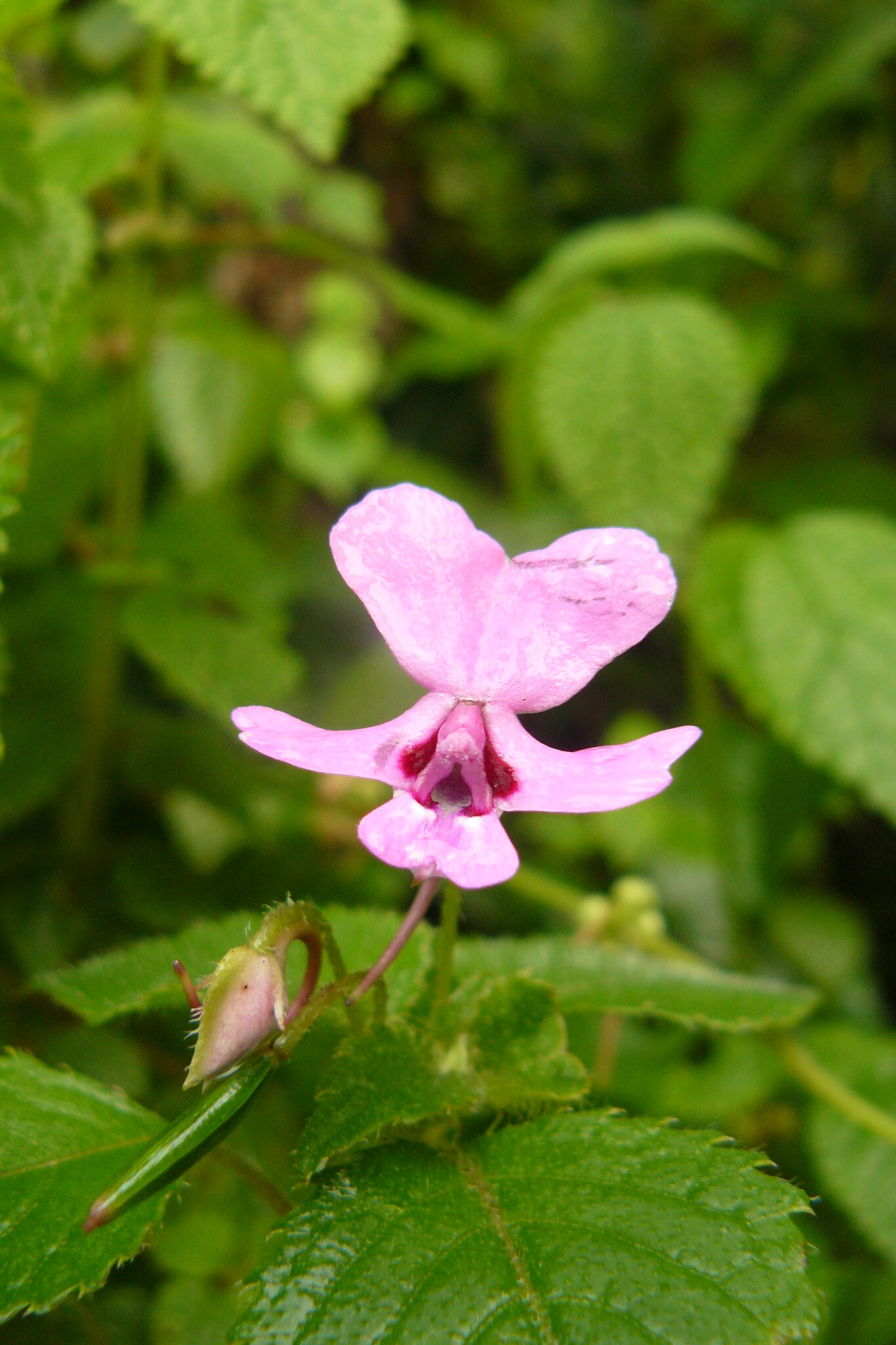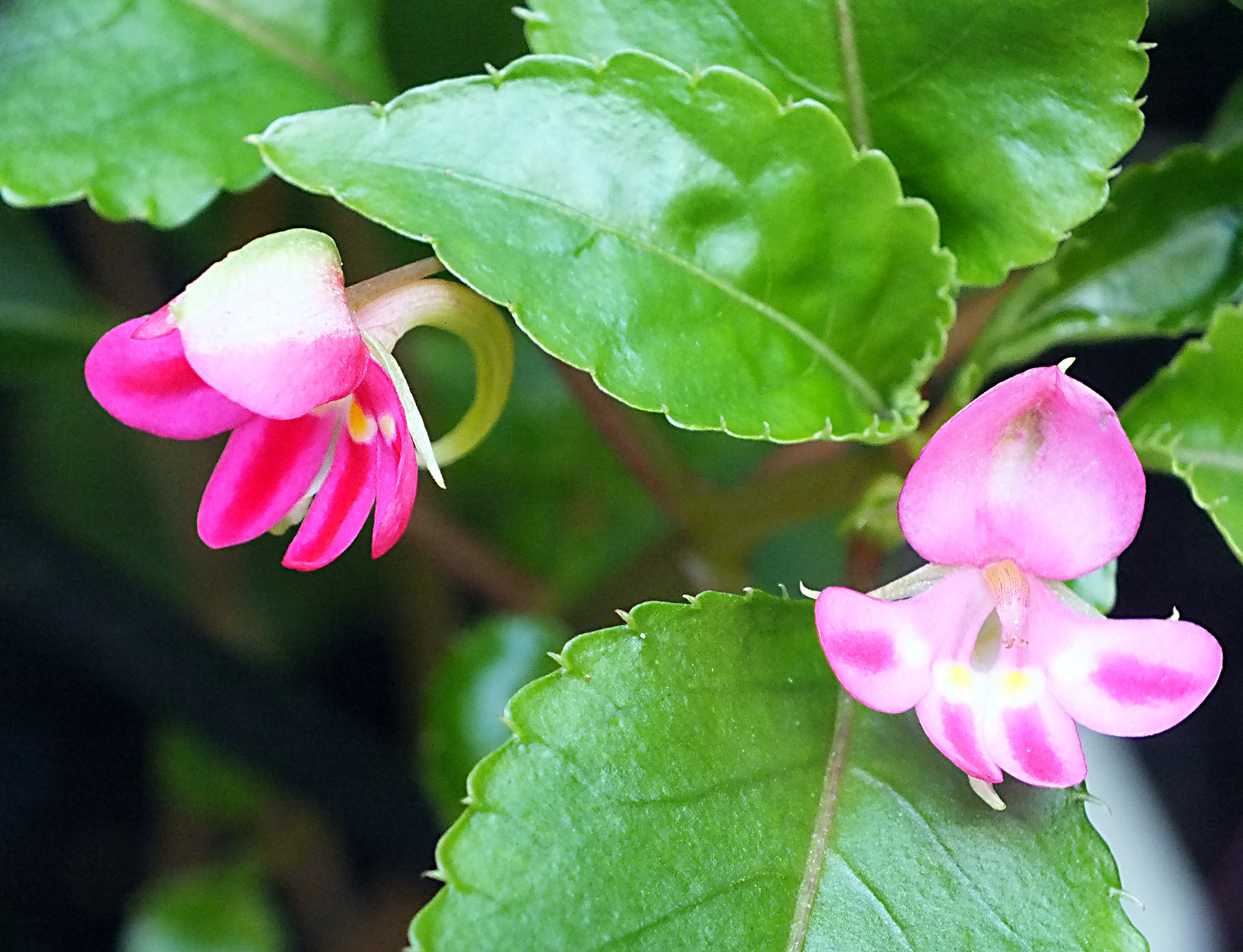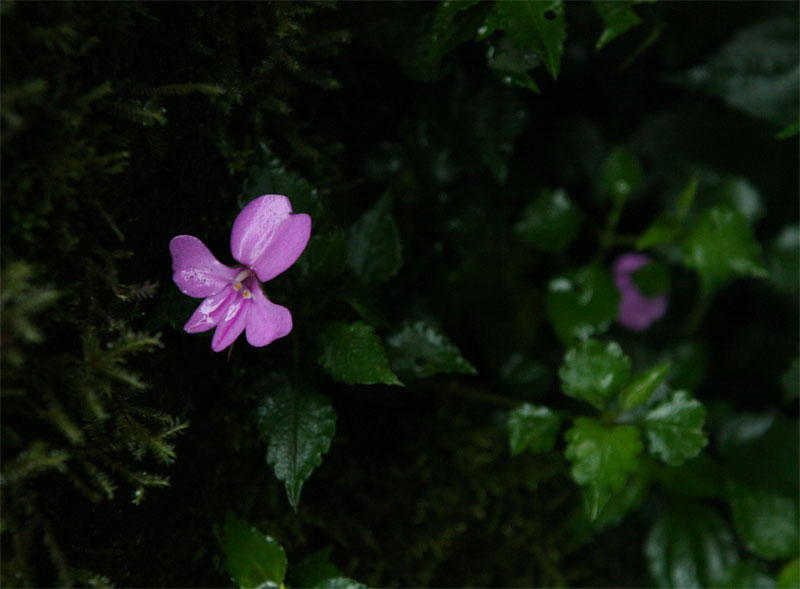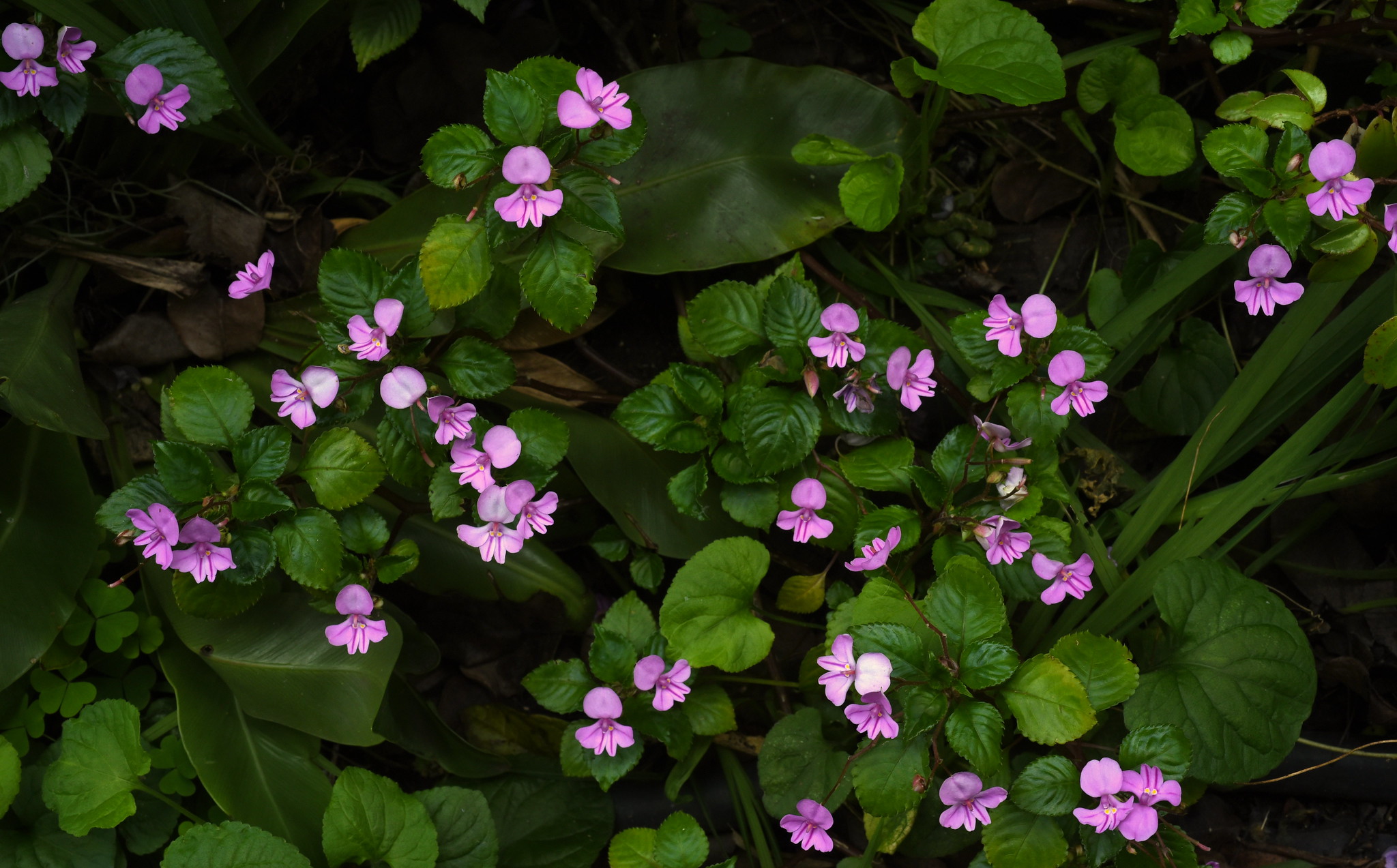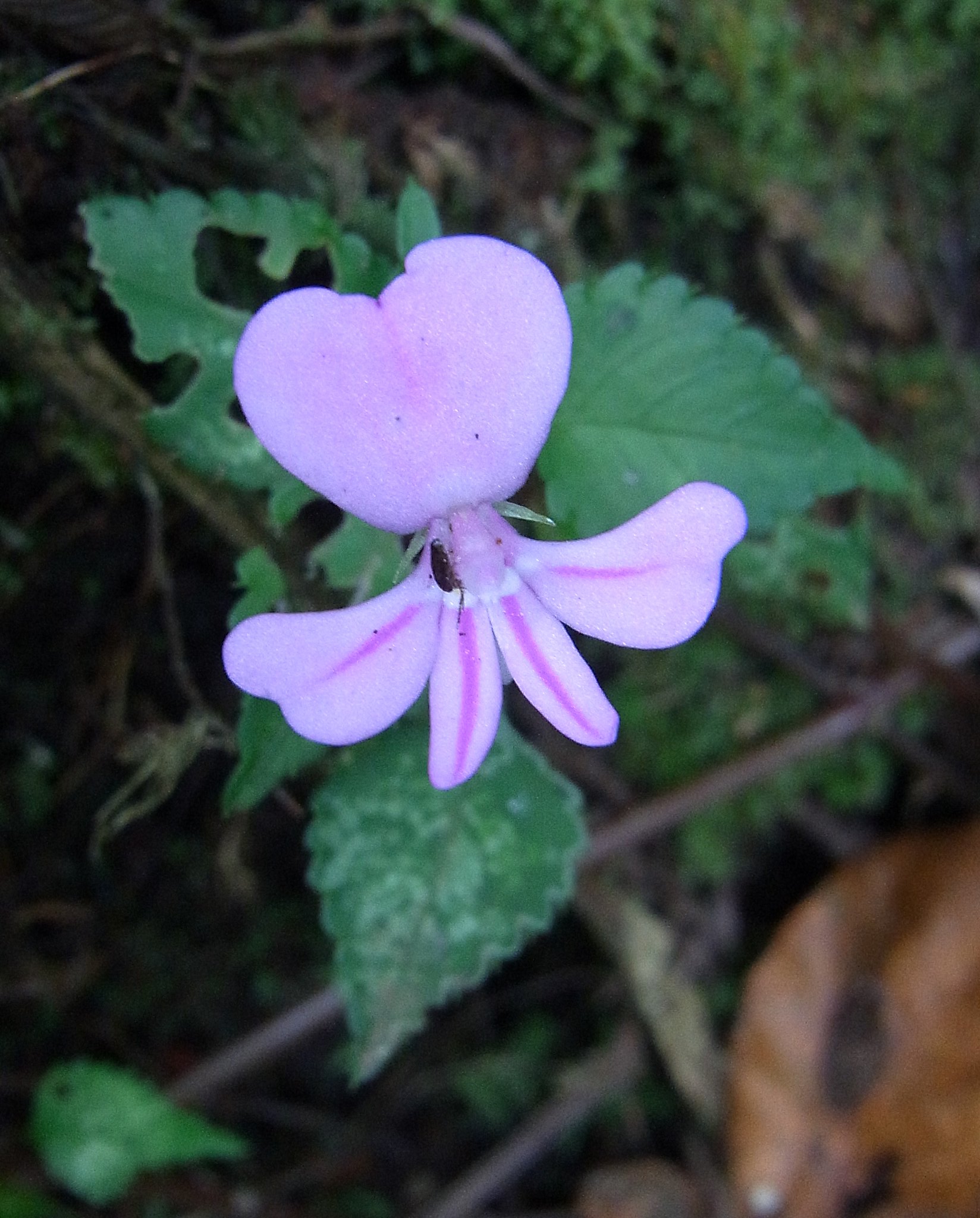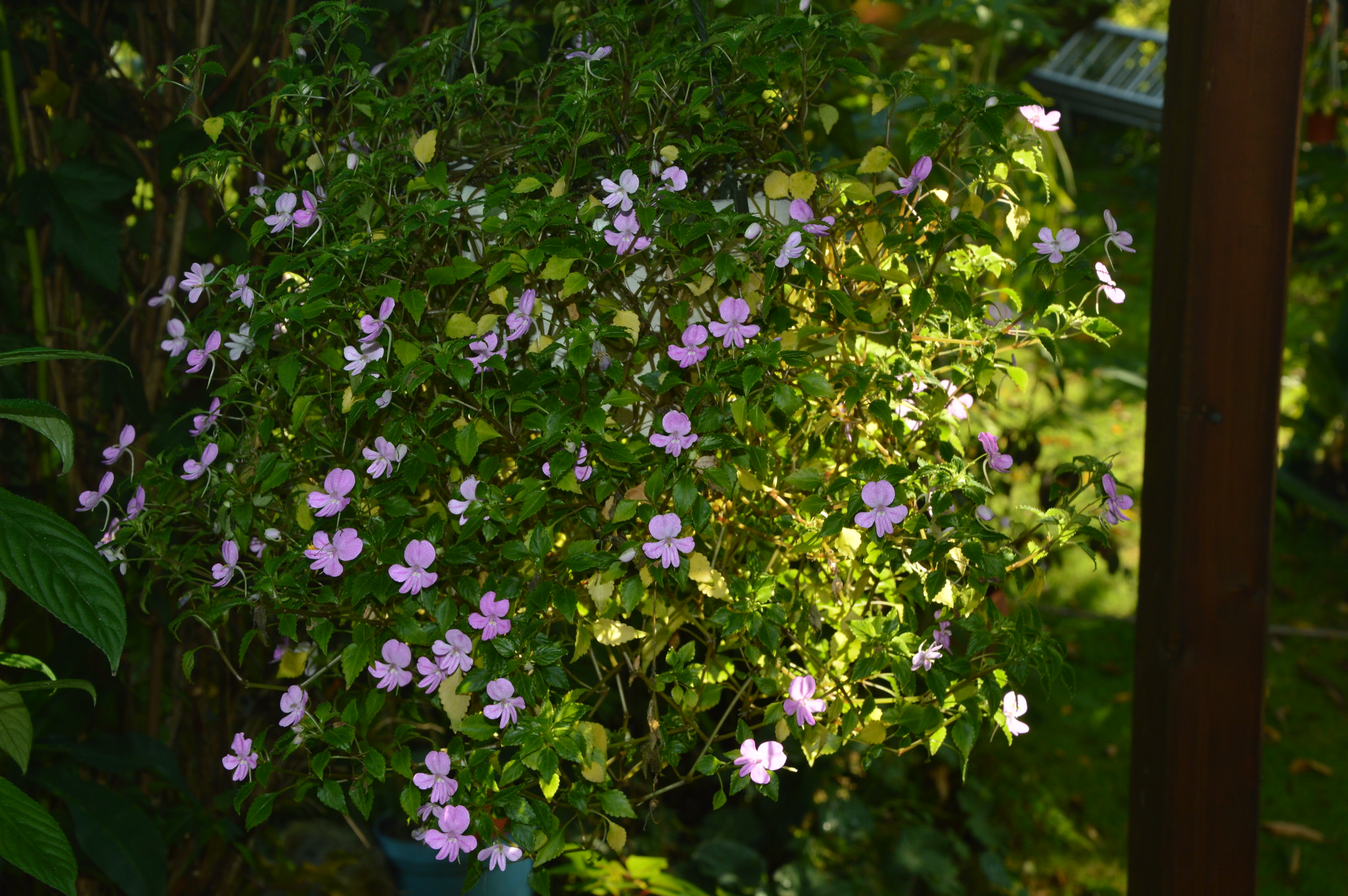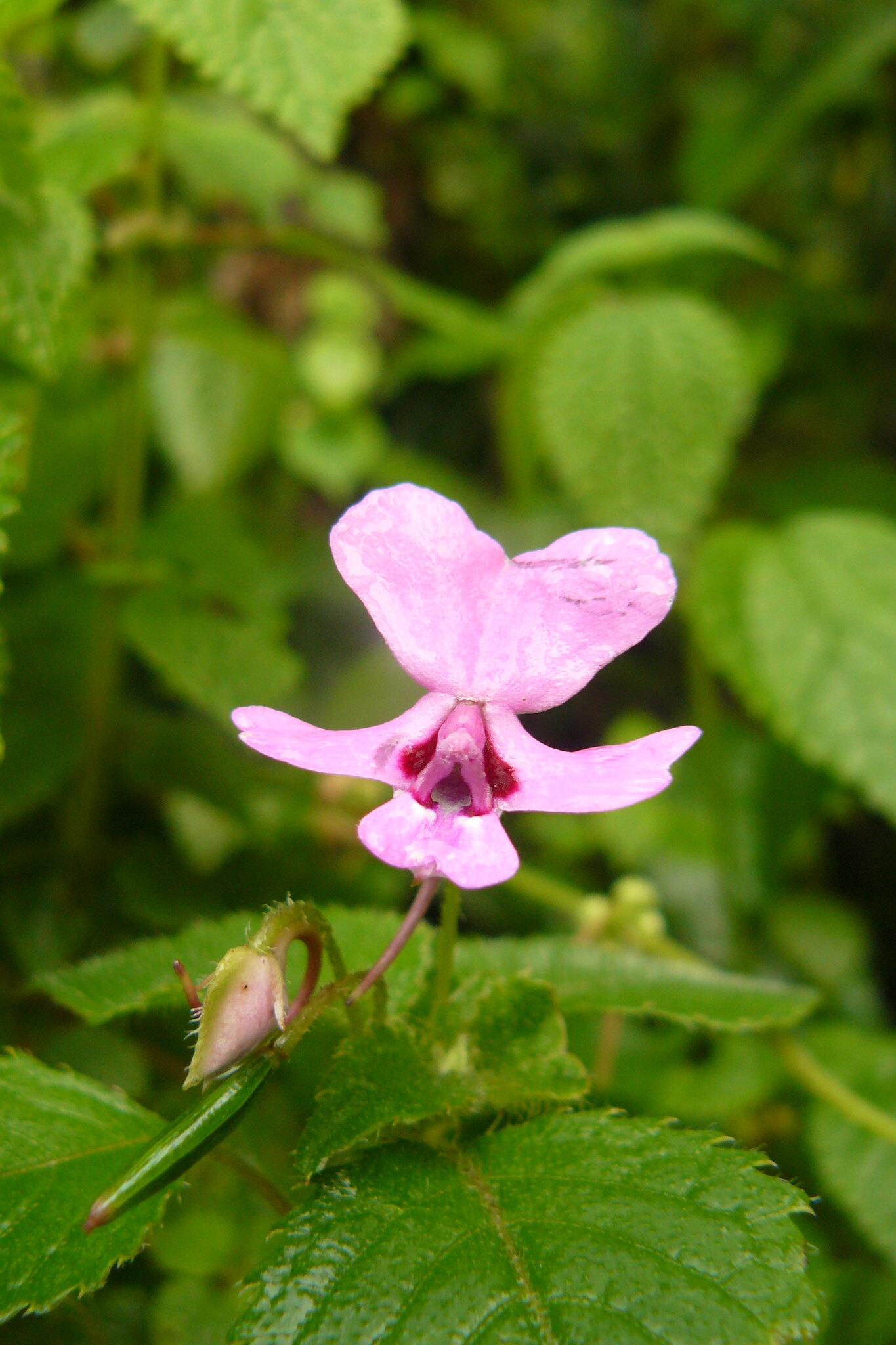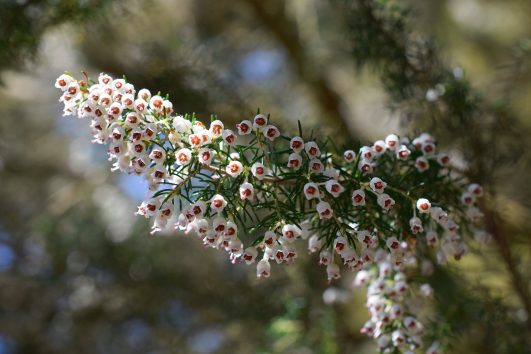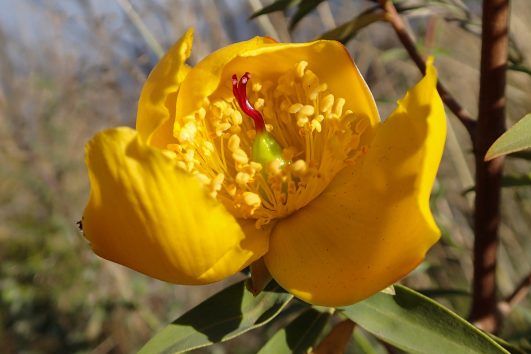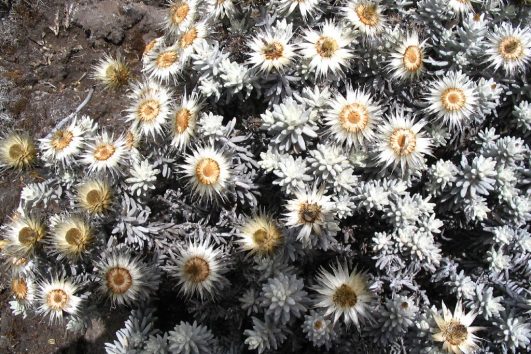Impatiens pseudoviola is a species of flowering plant in the family Balsaminaceae, known for its unique characteristics and ecological niche. Among the diverse and vibrant flora of Mount Kilimanjaro, Impatiens pseudoviola, commonly known as the touch-me-not, stands out as a delicate yet fascinating plant. Endemic to the montane and subalpine zones of Kilimanjaro, this plant is a testament to the unique biodiversity found on Africa’s highest mountain. Its intriguing common name, “touch-me-not,” is derived from the plant’s distinctive seed dispersal mechanism. With its eye-catching blooms and captivating biology, Impatiens pseudoviola offers a glimpse into the wonders of Kilimanjaro’s plant life.
Impatiens pseudoviola is typically found in the montane and subalpine zones, which lie between 1,800 and 4,000 meters (5,900 to 13,100 feet) in elevation. These zones are characterized by cooler temperatures, higher humidity, and frequent mist or cloud cover, providing an ideal environment for moisture-loving plants like impatiens.
The montane zone is dominated by lush rainforests, while the subalpine zone features more open landscapes with giant heathers and scattered shrubs. In these habitats, Impatiens pseudoviola often grows in the shade of taller vegetation, taking advantage of the cool, damp conditions provided by the forest understory or rocky outcrops. This sheltered environment helps protect the plant from the intense sunlight and drying winds that can occur at these altitudes.
- Botanical Description:
- Appearance: Impatiens pseudoviola features small, often solitary flowers that can vary in color but typically have a violet hue, which might explain part of its name (“viola” referring to its violet-like appearance). The plant itself has a delicate structure, with leaves that might resemble those of violets in some ways, contributing to its name.
- Growth Habit: It tends to grow in a herbaceous manner, often with a sprawling or climbing habit, typical of many Impatiens species.
- Habitat:
- Distribution: This species is native to parts of Africa, particularly in regions with a tropical or subtropical climate. It thrives in shaded, moist environments, often in understory habitats where the light is filtered and the air is humid.
- Ecology: Impatiens pseudoviola is adapted to environments where competition for light and space can be intense, often found in forest floors or along streams where the soil retains moisture.
- Ecological Role:
- Pollination: Like many Impatiens, it likely relies on pollinators such as bees, butterflies, or even birds, attracted by its colorful flowers.
- Seed Dispersal: Impatiens species are famous for their explosive seed pods, which burst open when ripe, flinging seeds away from the parent plant, aiding in dispersal.
- Adaptations:
- Moisture Retention: Its habitat preference suggests adaptations for retaining water, possibly through succulent leaves or stems.
- Shade Tolerance: Being an understory plant, it’s adapted to lower light conditions, which might involve efficient photosynthesis at low light levels.
- Cultural and Scientific Interest:
- Botanical Study: While not as widely recognized as some other Impatiens species, Impatiens pseudoviola could be of interest for botanists studying plant evolution, particularly in how it has adapted to its specific ecological niche.
- Conservation: As with many species in tropical forests, its habitat faces threats from deforestation, climate change, and human encroachment. Conservation efforts might focus on preserving its natural habitat.
- General Information on Impatiens:
- The Impatiens genus includes over 1,000 species, many of which are popular in horticulture for their vibrant flowers and ease of growth. They are known for their rapid growth and the aforementioned explosive seed dispersal mechanism.
Description of Impatiens pseudoviola
Impatiens pseudoviola is a herbaceous perennial that adds a splash of color to the Kilimanjaro landscape. Its delicate flowers and interesting foliage make it a distinctive member of the impatiens family. Here’s a closer look at its key characteristics:
- Flowers: The flowers of Impatiens pseudoviola are small but striking, usually measuring about 2 to 3 centimeters in length. They are typically a soft pink or purple hue, with lighter shades or white accents that create a beautiful contrast. The flowers have a unique structure, with a tubular base that flares out into five petals. The lower petal is often larger and forms a sort of landing platform for pollinators, while the upper petals curve elegantly over the flower’s mouth. These blooms appear in clusters, creating a charming display against the plant’s green foliage.
- Leaves: The leaves of Impatiens pseudoviola are simple, ovate to lanceolate in shape, and have a smooth, glossy texture. They grow alternately along the stems and can reach lengths of up to 8 centimeters. The leaves are typically a vibrant green, which provides a lovely backdrop for the plant’s colorful flowers. The foliage is not just decorative; it plays a crucial role in the plant’s ability to capture sunlight and perform photosynthesis, even in the dappled light of the forest understory.
- Growth Habit: Impatiens pseudoviola is a low-growing plant that typically reaches heights of about 30 to 60 centimeters. It has a branching habit, with multiple stems emerging from a central base. This growth form allows the plant to spread out and occupy the space available in its environment, creating a dense mat of leaves and flowers that can help to outcompete other ground-covering vegetation.
The Touch-Me-Not Mechanism: Seed Dispersal
One of the most intriguing aspects of Impatiens pseudoviola is its seed dispersal mechanism, which is the source of its common name, “touch-me-not.” This plant has evolved a unique strategy to ensure the widespread distribution of its seeds, which involves explosive seed pods. Here’s how it works:
- Explosive Seed Pods: After the flowers of Impatiens pseudoviola are pollinated, they develop into elongated seed pods. As these pods mature, tension builds up within the pod walls. When the pods are fully ripe, even the slightest touch or disturbance can trigger them to burst open, flinging seeds in all directions. This explosive action can send seeds flying several meters away from the parent plant, helping to spread the plant’s offspring over a wide area.
- Advantages of Explosive Dispersal: This method of seed dispersal offers several advantages. By spreading seeds over a larger area, Impatiens pseudoviola increases the chances that some of its seeds will find suitable conditions for germination and growth. It also reduces competition among seedlings by ensuring that they are not all concentrated in the same location. This strategy helps to maximize the plant’s reproductive success and contributes to its survival in the competitive environment of Kilimanjaro’s montane and subalpine zones.
Additional information
| Habitat | Montane Forest Zone |
|---|

